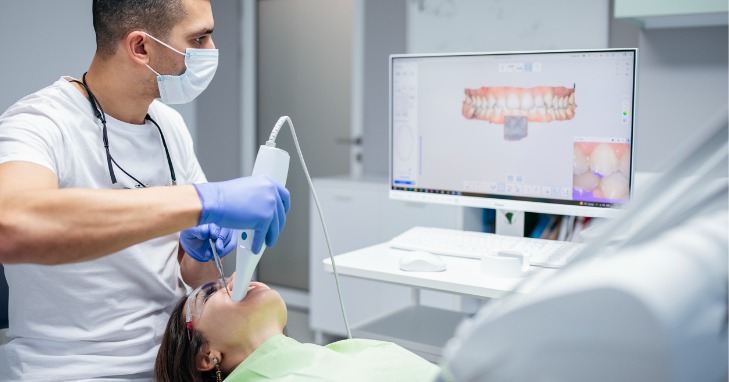We live in a digital world. There’s a digital element to most aspects of our lives, and orthodontics is no exception. In the last 30 years, the field of orthodontics has evolved significantly. There are more orthodontic options to choose from and better treatment processes available. The advances in orthodontics have improved the experience for both patients and doctors.
Evolution of Orthodontics
Digital orthodontics has made it possible for new treatment options, and advances in orthodontics mean patients today have far wider choices than 20 years ago. People will always want the most inconspicuous orthodontic treatment, and luckily, they can now choose treatment types that are virtually impossible to see from a short distance. Lingual braces, for example, are worn on the inside of teeth, and ceramic braces are a similar shade to the patient’s teeth. Invisalign is a thin, clear plastic that is suitable for more orthodontic cases than they were previously.
Computer-aided manufacturing (CAM) means treatment options that require custom products are now available for most people. As lingual braces sit on the inside of teeth and every tooth has a different shape, the brackets are slightly different to accommodate the tooth’s surface. Having individual brackets made by hand was cost-prohibitive for most of the population. Computer-aided manufacturing means the brackets can be made much faster, therefore reducing the cost.
Intraoral cameras allow orthodontists to examine the mouth in more detail than they could previously. The high-resolution footage and images mean patients can see the same thing orthodontists can, making it easier to explain to a patient what the issue is and where it’s occurring. The cameras provide more accurate diagnoses, and the images can be kept on file for future referrals.
Benefits of Digital Orthodontics
Digital technology has delivered a range of benefits to the world of orthodontics that can be enjoyed by the patient and professional.
A Look at the Final Outcome
Before the age of digital orthodontics, patients couldn’t see what the result of their orthodontic treatment would be. The orthodontist could draw a diagram and point to the x-ray, hoping the patient could understand their description and visualize what their teeth will look like after a few years of braces. With Computer Aided Design (CAD), orthodontists can show patients how their teeth will move and what their final smile can look like through a clear 3D visual. There’s no need for patients to guess or put blind faith in the professional. The software also helps orthodontists plan the treatment and provide patients with an accurate timeline.
Comfort
No one likes having impressions taken of their teeth. The paste never tastes great, and the waiting time to cure in your mouth feels like an eternity. Digital scanning of the teeth means there’s no need for impressions. Digital scanning of teeth is not only far more comfortable than impressions but also more accurate.
Remote Appointments
In the past, there was no option for people living in remote areas to have orthodontic treatment unless they were willing to travel for every appointment. Tele-dentistry technology now allows patients to have some appointments virtually and travel for fewer ones.
Faster Imaging
In the past, most orthodontic clinics would courier the impressions to a lab in another location for processing. It took time and money. Now that orthodontists can scan teeth, there’s no need to take impressions and send them. The 3D scan of the patient’s teeth is ready for immediate viewing, not days.
Digital Orthodontic Challenges
While digital orthodontics pays dividends with improved patient care and outcomes, there is a cost in buying the technology and training staff on how to use it most effectively. Patients who benefited from the new technology paid a higher price for treatment than those who came after them.
Future Outlook of Orthodontics
The future of digital orthodontics is bright. New advances are being made regularly and will continue to change the industry. Orthodontic patients of the future may experience better visuals of their current treatment and outcome, and patients may be able to make more informed decisions about their treatment options. Looking for an orthodontist near you? Use our online directory to get started on your journey to a beautiful smile!
Source: https://www.theorthodontists.com.au/blog/digital-orthodontics-the-future-of-precision-and-efficiency

